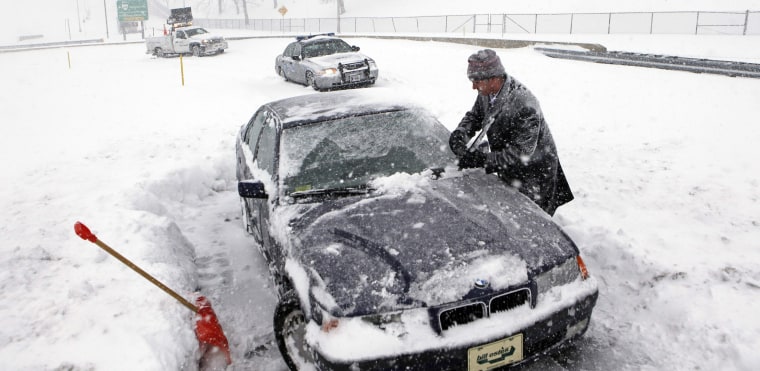The National Weather Service wants you, your car and your cell phone. Specifically, NWS wants weather data from all three of those sources.
A brand new program using Twitter to gather weather information has just been launched. At the same time, meteorologists are testing out a system to turn cars into roving weather stations, so drivers everywhere will know exactly what the road ahead has in store.
The new projects are designed to fill in the vast spaces among the more than 120 NWS forecast offices nationwide and their many, but still limited, number of trained volunteer weather spotters.
"There's actually quite a bit of gaps between them," said weather researcher Sheldon Drobot of the National Center for Atmospheric Research in Boulder, Colo.
Drobot is working on a system that would take data most cars already gather about the weather, then process and blend the information with radar, satellite and other weather data. The report would be then sent back to drivers, helping them to avoid potential hazards ahead.
"A lot of cars already have outside temperature readings," Drobot told Discovery News.
Many vehicles also have on board GPS receivers and gather barometric pressure information, which are used to automatically adjust the engine's fuel/air mix for different elevations.
Rain and snowfall information could be gleaned from windshield wiper use — on, off, fast, slow — and even antilock brakes and headlights provide valuable insights about weather and road conditions, he explained.
"All we really need is some way to send this data to somewhere we can process it," Drobot said. "The more complicated cars get, the more useful they get."
Automobile manufacturers are already sold on the idea, says Drobot, and the federal Department of Transportation is on board as well.
A pilot project is underway in Detroit, Mich., Drobot said, and hopes are high that the average driver will see benefits within the next decade.
Drobot is scheduled to present the latest developments on Jan. 18 and 19 at the meeting of the American Meteorological Society in Atlanta.
If you have a cell phone, however, you can begin providing valuable weather information right now with or without a car.
A Twitter-based program has just launched. It allows the NWS to monitor weather tweets by anyone who wants to offer up notes, pictures or links to information about what's happening in their neck of the woods.
"If you go to Twitter and type in hail or rain, you'll find a lot of tweets," said NWS meteorologist Tim Brice of the El Paso forecast office in Santa Teresa, New Mexico.
The new program is aimed at getting tweeters to put specific tags on their tweets that allow the NWS to better find them and use them to fine-tune weather warnings, Brice explained.
Furthermore, brand new, voluntary geotagging capabilities of Twitter will allow weather tweeters to automatically provide their locations to the NWS, which is essential to making use of the weather tweet.
"We need to get our warnings out to the public, and we need to get information from the public too," Brice said. "We don't know that a storm is severe until somebody calls us, especially out here in the West."
The bottom line, says Brice, is that weather information is no longer a one-way street.
